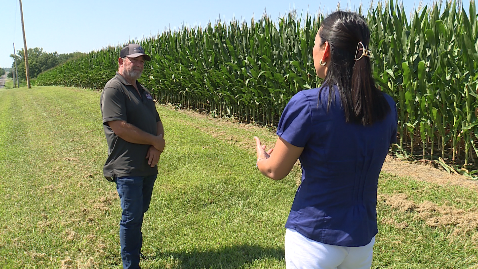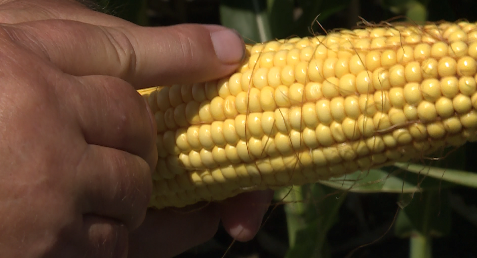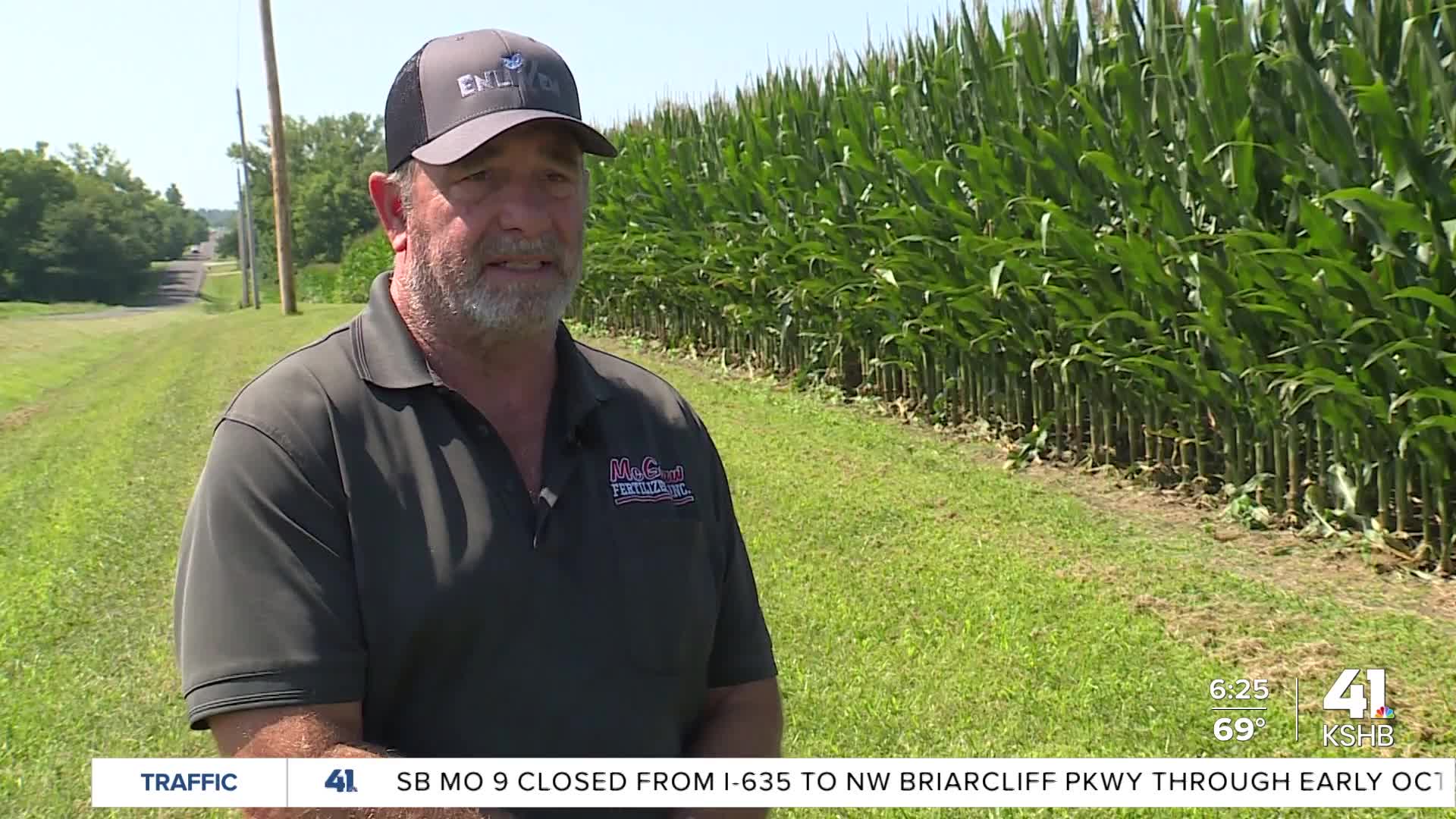KSHB 41 anchor/reporter JuYeon Kim covers agricultural issues and the fentanyl crisis. Share your story idea with JuYeon.
—
Weather experts say a phenomenon called “corn sweat” is potentially exacerbating the impacts of extreme summer heat.
Temperatures are back up in the high 80s this week, and as the saying goes, it is not the heat that gets you but the humidity.
The process, known by the scientific term evapotranspiration, is the natural process by which plants move water from the roots of the plant to the surface. The water then evaporates into the atmosphere, making the local region feel more humid.
In the peak of summer, an acre of corn will transpire 3,000-4,000 gallons of water into the atmosphere per day.
“It would actually have beads of sweat on this if you were out here at the right time of day,” said Kevin Kirkwood, McGraw Fertilizer plant manager. “On a day last week, when humidity was at its peak, the corn was transpiring at its peak, absolutely. Ten to 15 degrees hotter in the field. Corn sweating — you’re gonna feel it.”

Corn sweating is not anything new, but it is getting more attention this year because people are really feeling the humidity from the Gulf Stream and above-average rainfall.
It is uncomfortable, but not all bad for agriculture.

“We’ve had a lot of timely precipitation that’s allowed the crops to grow really well,” said Kansas Mesonet meteorologist Chip Redmond. ”We erased a lot of the drought in the plains over the last few months, and that’s been fantastic to add soil moisture and to give ample moisture for these crops to grow and do well.”

Kirkwood has seen the abundance first-hand as well.
“It’s amazing to see this kind of stuff happening this year with the crops,” Kirkwood said. “Right now, for a couple weeks, corn was at its right time in the production of its cycle, that it transpired heavily just because we have the moisture. So this doesn’t happen every year like it did this year. But that’s how you weigh the pros and cons.”

Redmond says whether people like it or not, corn sweat has the potential to change our region's climate in the long term.
“We might be getting some contribution from corn just because our average low temperatures are increasing. So we’re not cooling off as much overnight, and part of that might be because of the crops that we choose,” Redmond said.
The impact of corn sweat may be concerning, with more than 80% of U.S. corn produced in the Midwest. But Kirkwood believes the impact is more local than regional.

“You could add five to 10 percent in a localized area,” Kirkwood said. “That corn transpiring right here in this field in Tonganoxie, Kansas, is not changing the humidity in Kansas City. That’s my non-professional opinion."
So while certainly a factor, Redmond says the rise in humidity cannot all be attributed to corn.
“I always say, you know, if we’re concerned about corn sweat, maybe we should be worried about what kind of environmental impact we ourselves are having. What are we doing with our trash?” Redmond said.
—




